The Article
ISOL-8 SubStation Integra Mains Conditioner
26th January 2018
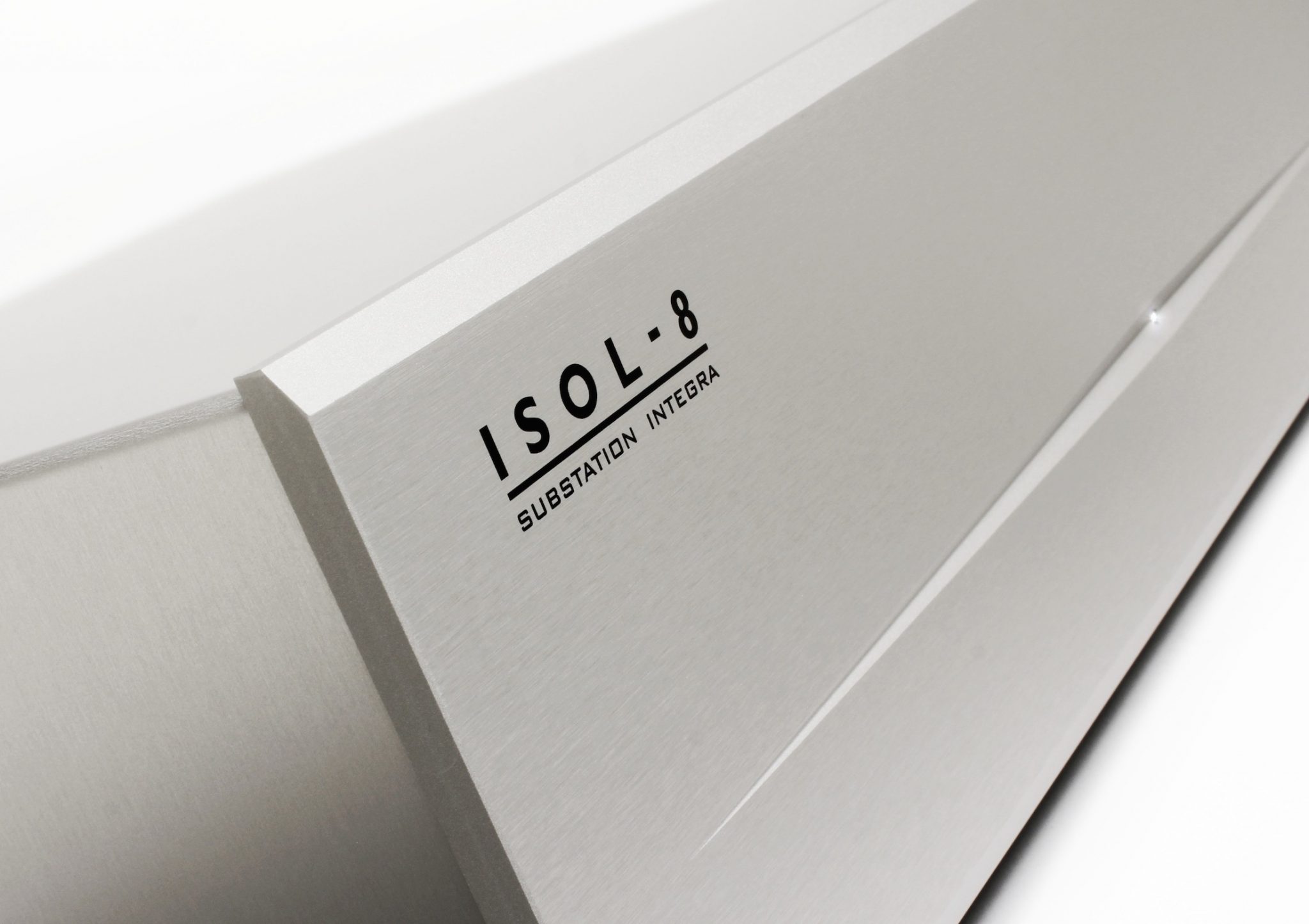
Can mains conditioning improve sonic performance from a typical hi-fi? Paul Rigby checks out ISOL-8’s Substation Integra to find out
The mains, the electrical mains supply that is, is a nasty place, if you’re an audiophile, that is. The mains produces lots of power and can boil a kettle like a good’un but, if you want to do something specialist with it like play a piece of vinyl, then there’s issues. I’ve never boiled a kettle and wished that the whistle emanating from the same was a little less bright in the upper mids. I have wished that Miles Davis’ trumpet solo was not as screechy sounding during crescendos. Both sounds are ultimately powered by the mains, both require different source requirements.
How to describe the common or garden mains? Let’s imagine that we’re a few thousand feet upwards, standing by a mountain spring. Look at the flow of water. Look carefully. It’s water, yes, but what else? Well, in this case, nothing of any note. In fact, you can see right through it to the stone beneath. The water is pretty pure ‘as is’. Good enough to drink and to feel good doing it, eh?
OK, let’s run back down the mountain again and find a polluted urban waterway. Shouldn’t be too hard to search out one of those.
Look into that poor excuse for a stream. Firstly, it’s a struggle to actually see through it because it’s a sort of browny, greeny colour. Then there’s crisp packets in there. Bits of paper I see. There’s a supermarket trolly, a bike and some gooey stuff that looks…ok, let’s not go there. Oh, and is that dead body rushing past?
This stuff can still be described as water, folks. But is this stuff good enough to drink? It you’re interested in a dose of cholera, then maybe so.
Think of the mains like that. You might have electricity in there but there’s lots of other stuff too. Now instead of the stream example I gave above, where you could see the rubbish, for the mains, well you can hear the rubbish instead.
And the rubbish is? Noise picked up from the rather industrial hardware that produces it in the first place. It’s there to do a job, not give you a gold standard. Also, mains electricity tends to pulse so it can take the noise from electrical components back into the mains supply and then spread it around, rather too democratically. This includes your fridge, washing machine, your TV/computer and surround sound and more. But not just yours, your neighbour’s gear too. Even your neighbours from way up the road there. And not just that, the street lights and anything else knocking about. Urban areas experience more noise than country areas because there’s more electrical activity going on and more people living closer together (and, I must add, this review will be of more value to urban readers than country folk – although everyone should benefit).
This is why, if you live in a town or city, your hi-fi sounds better late at night. Because everyone else is in bed and not using their electrical gadgets.
All of this mains rubbish feeds into your hi-fi and does terrible damage. What does it sound like, the rubbish I describe? Well, you don’t really hear it at all. That’s the nasty part about it. That’s why most people ignore the problem. If this stuff sounded like an ambulance or a pneumatic drill then you’d sort it, wouldn’t you? This mains noise is more insidious. You only notice it when its gone because it’s subtle noise that masks music. The more of this stuff that you have in your mains, the more music you lose by this veiling. I’m talking delicate stuff like reverb, little vocal nuances, the change in tone when a musician really puts a bit of welly into a guitar strum. That kind of thing. Because you loose this important information, you’re really only hearing around 70% of the full capabilities of your hi-fi system. You’re wasting money.
I have reviewed mains products before including balanced power units from the likes of Russ Andrews and Vertex AQ but this example from ISOL-8 is different. The SubStation Integra is a very busy power conditioner, built with the intention of helping you to actively strip the rubbish from your mains. So, you plug your hi-fi into this box and then the box into the mains itself.
The unit features a physically separated high and low/medium current topology. All internal wiring is silver plated with PTFE insulation.
The Integra employs separate filters for each outlet, external noise and noise generated from within the system are both blocked. Each filter section can then be designed for its dedicated load and cross contamination from one component to another reduced.
Included filters are designed to combat all major types of transmitted electrical noise, both differential and common mode. Asymmetrically present in Live and Neutral conductors, differential mode noise is, “…costly to effectively attenuate and is often simply ignored by many other mains conditioners,” said the company.
Any mains waveform that is not symmetrical in energy content will contain a DC voltage component. The AC transformers fitted to your equipment’s power supply are, “…compromised by DC, partially saturating their magnetic circuit.
The ISOL-8 circuit eliminates this common mains problem, suppressing acoustic hum and liberating system performance,” the company added.
Also, the mains can exhibit short term voltage spikes and surges. These events can cause damage to unprotected components. ISOL-8 protects you with an “energy absorbing network”, clamping dangerously high voltage peaks.
A latching Neutrik 20 amp input connector allows for a 16 amp capacity.
In effect, you’re given four sockets for sources such as a turntable and CD player plus two for power units such as amplifiers. I used an IsoLink Ultra cable to connect the box to the wall socket.
SOUND QUALITY
There are hi-fi users out there – many with some tasty pieces of hi-fi kit too – that pay absolutely no attention to the mains in terms of removing harmful noise. Hence, I wanted such a scenario to be my initial ‘reference’: if you can call such a chaotic scenario a reference at all. Hence, I plugged my expensive hi-fi system, plus expensive interconnects and even higher end mains cabling, into a basic mains block. Something you might snatch from hardware store for around a tenner. Unrealistic? Far from it. I’ve spoken to many hi-fi users, some who count themselves enlightened enough to own quality cabling plus lots of isolation in terms of shelving and supports, who suffer from mains blindness but the time the hi-fi reaches the mains termination point.
I began testing the Integra with Public Image’s self-titled track from their debut LP, First Issue. There was much to like within this track but there should be, considering the hi-fi powering it. That said, there were issues.
Firstly, John Lydon sang this song using his trademark higher registers which resulted in the upper mids sounding rather pinched and harsh. The guitars were also resident in this area, adding to the harshness, giving the vinyl version a rather edgy, metallic CD-like presentation. More than that, Jah Wobble’s sub-bass bass guitar was, well, wobbly to be frank. It lacked focus and bloomed everywhere. So, instead of acting like a rhythmic beat, it seeped like a flooding river under your door. The reference hi-fi system dis a great job of isolating the delicate treble ‘tings’ from the combative percussive attack but, once there, the masking noise degraded that sound into a frozen, brittle response.
The largest problem that this configuration offered was not an immediate one. Only after several repeated listens to this track did I realise that I was now suffering from listening fatigue. Even if your conscious hearing doesn’t ‘hear’ any problem – your brain knows that there’s an issue and tries to continually adjust, then reminds you of the fact by introducing a convenient weapon of its own: a headache. That’s what was happening to me.
I then inserted the Integra into the hi-fi chain. And I then suffered writer’s cramp because so much happened. All at once. And very quickly. And I found it tough to get it down on my computer fast enough.
First up? The soundstage was so much larger. We’re talking extremes from broom closet to Albert Hall here. The difference was stark. I even moved my head back an inch to cope with it all. The band took up far more space ahead of me. This meant that each instrument now had extra room to perform, giving the entire track a more relaxed and certainly more flowing presentation. The song was also over in a jiffy instead of dragging on as it had before.
Next? That bass. Now, each string pluck was a separate moment in time. Each had a beginning and an end. This new focus gave the song a new driving force that increased the speed of the song, giving it new direction and power.
Speaking of power, the drums were now an expansive entity. Each drum strike offered its own specialist reverb tail that extended in time. That is, the time from the initial hit to the end of the note was actually longer now.
Lydon’s voice offered great control. His fabulous performance was now listenable which added clarity to the lyrics. It was now far easier to hear what he was singing about.
The conversation in this song is, arguably, via the skilful guitar from Keith Levine. His rolling guitar patterns made much more sense now. That guitar could enter into distortion far too easily on an uncontrolled hi-fi. Here, with the Integra, the Levine ‘sound’ was just, well, impressive. A guitar symphony on its own.
I moved up from my dodgy mains block to a standard block of quality from Nordost, a Quantum Qbase QB6 full of added extras such as star-earthing and the like. This is not a conditioner but it is a quality mains block that retails around the £1,200 area.
I eased the tempo down with Nancy Wilson’s jazz-inflected You’ve Got Your Troubles. The Nordost did offer a much better basic level sound quality. A larger soundstage, a sense of clarity and detail around the midrange and more. A whole lot better than the basic hardware model, it’s true.
The Integra though, extended the size of the soundstage still further and introduced a very smooth midrange which gave Wilson’s voice a sultry and attractive presentation. More than that, the midrange provided new insight. The strumming guitar on the right channel exuded new detail and added information in terms of the strings themselves. Instrumental separation also revealed new instruments within the backing orchestra while secondary percussion from the likes of the tambourine provided a characterful and more rounded personality.
CONCLUSION
Everyone will benefit from the Isol-8 SubStation Integra but those in urban environments will see this box as a god-send, revealing previously hidden detail and presenting the music as it should without, I almost forgot to add, without harming the dynamic extension. Unlike some conditioning brands out there, you never feel that the Integra rounds off the treble or the midrange. Extension remains present and correct, a big relief.
And ‘relief’ is the one word I’d use when listening to the ISOL-8. After listening to an infected mains supply, switching to the Integra makes you physically take a breath of relief. While uttering a quiet word of thanks that you can finally listen to your music as it should be heard.
ISOL-8 SUBSTATION INTEGRA
Price: £2,199 (£2,299 for unit in black). The IsoLink Ultra cable is £270
Tel: 020 8856 8856
Email: [email protected]
Website: www.isol-8.co.uk
Good: noise removal, easy to use, build, spacious mids, focused bass, clarity
Bad: nothing
RATING: 8
REFERENCE SYSTEM
Origin Live Sovereign turntable
Origin Live Enterprise 12″ arm
Transfiguration Proteus cartridge
Icon PS3 phono amplifier
Aesthetix Calypso pre-amp
Icon Audio MB845 Mk.II monoblock amplifiers
Quad ESL-57 speakers with One Thing upgrade
Vertex AQ & Tellurium Q cable
Blue Horizon Professional Rack System
Harmonic Resolution Systems Noise Reduction Components
All vinyl was cleaned using an Audio Desk’s Ultrasonic Pro Vinyl Cleaner

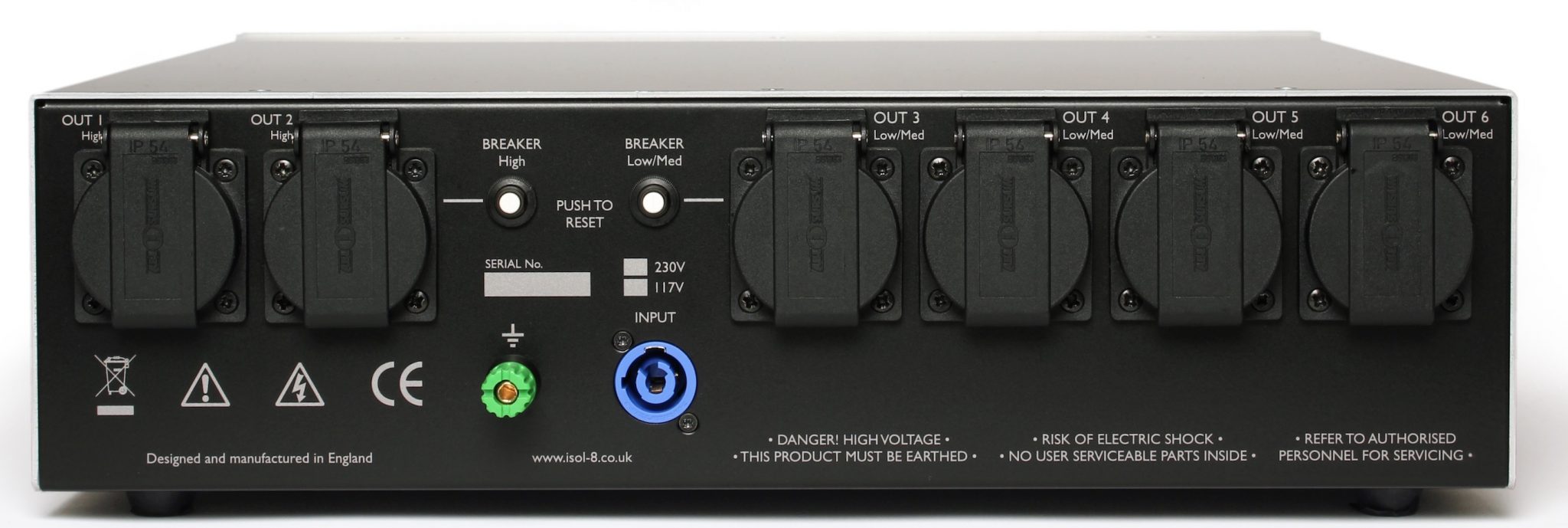
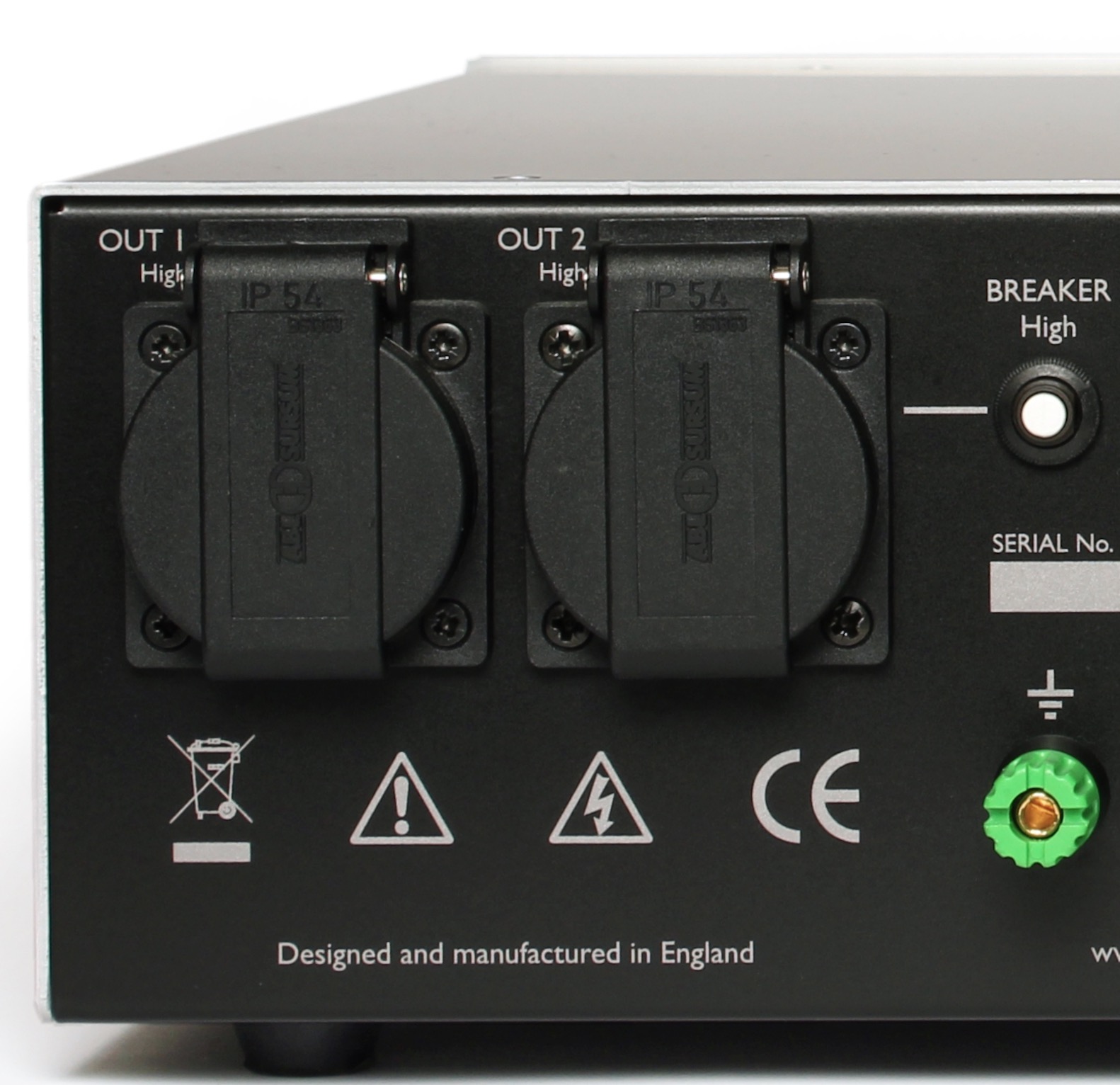
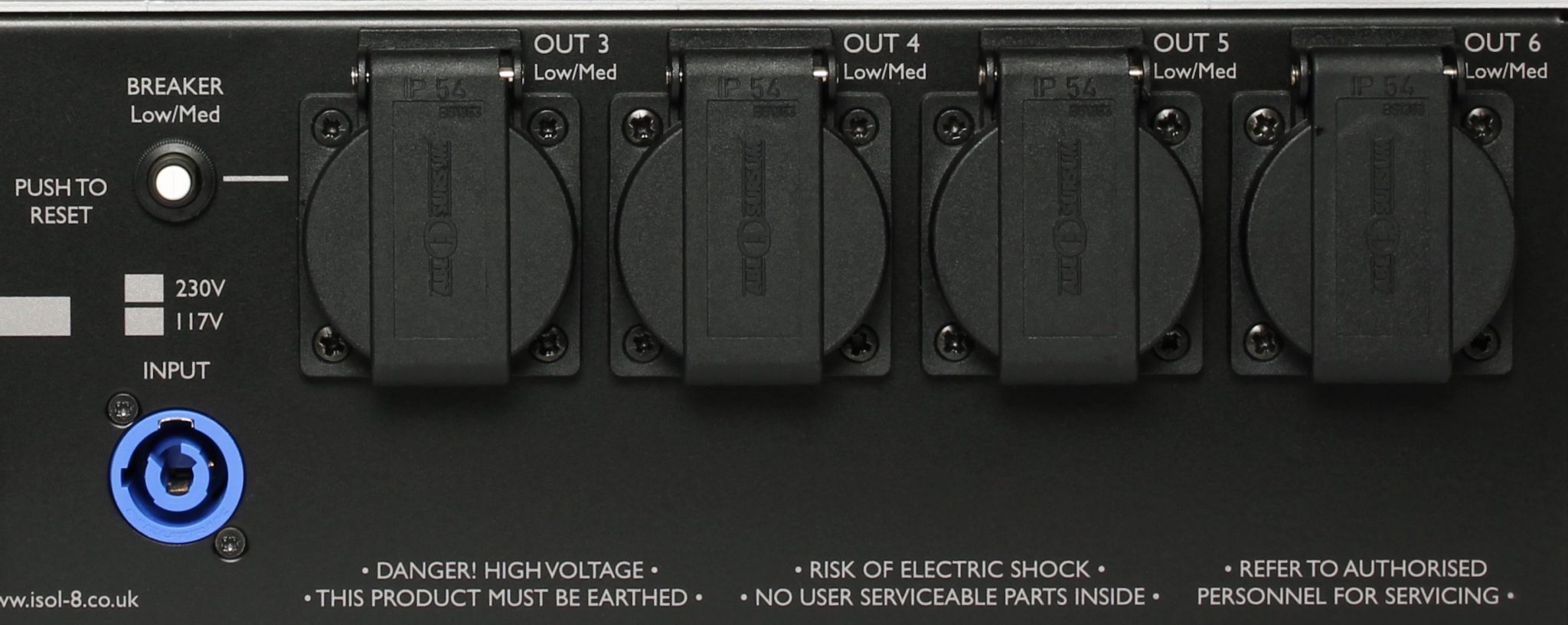
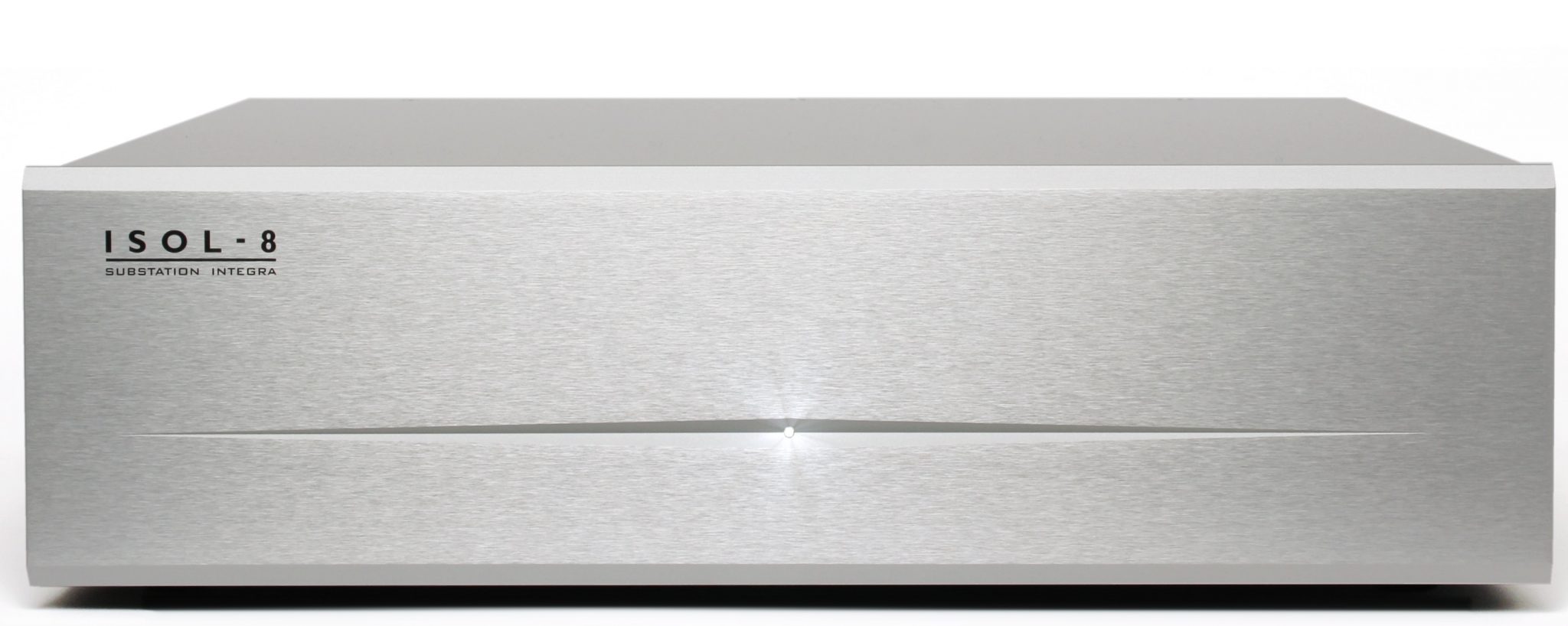
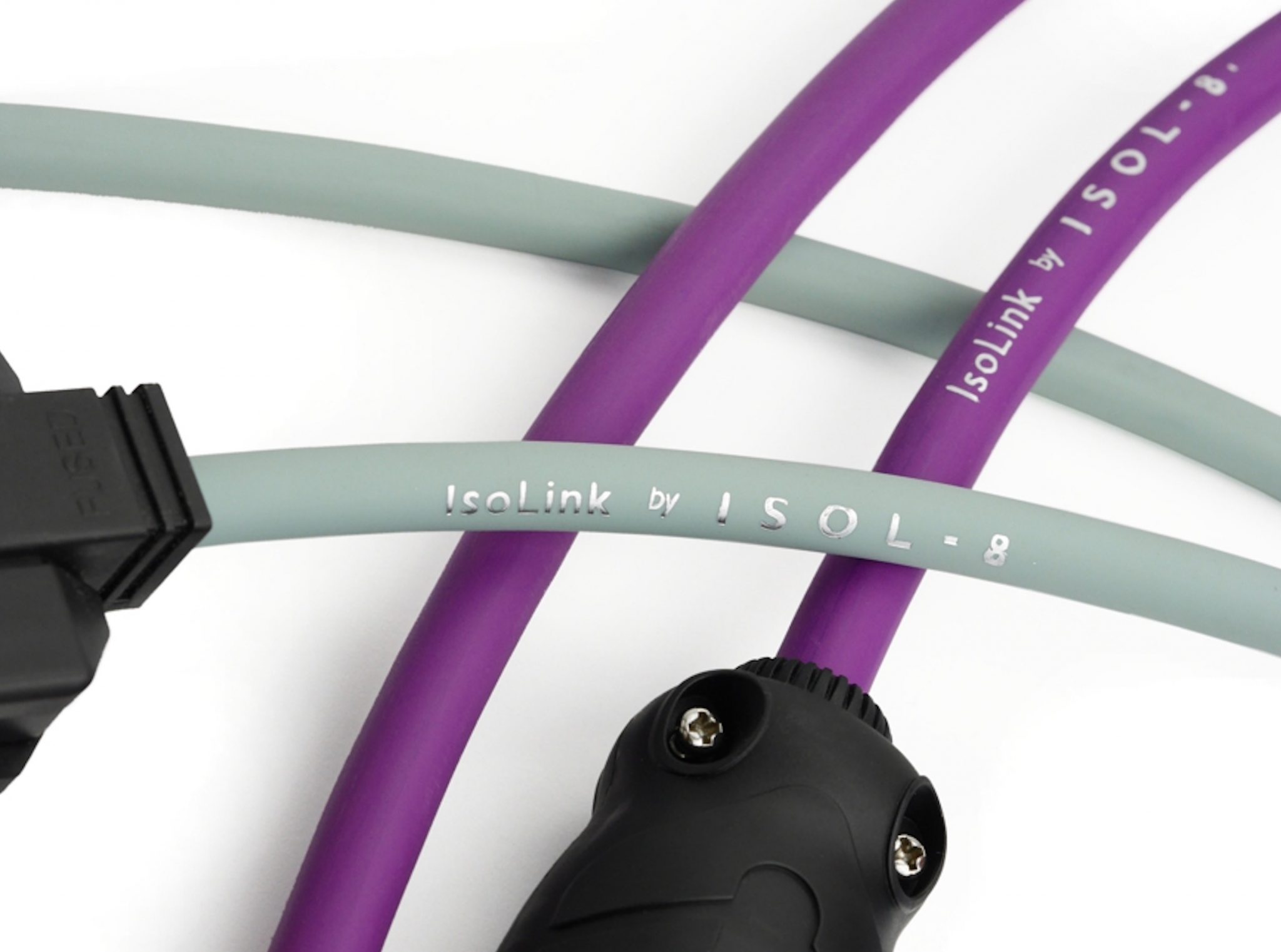
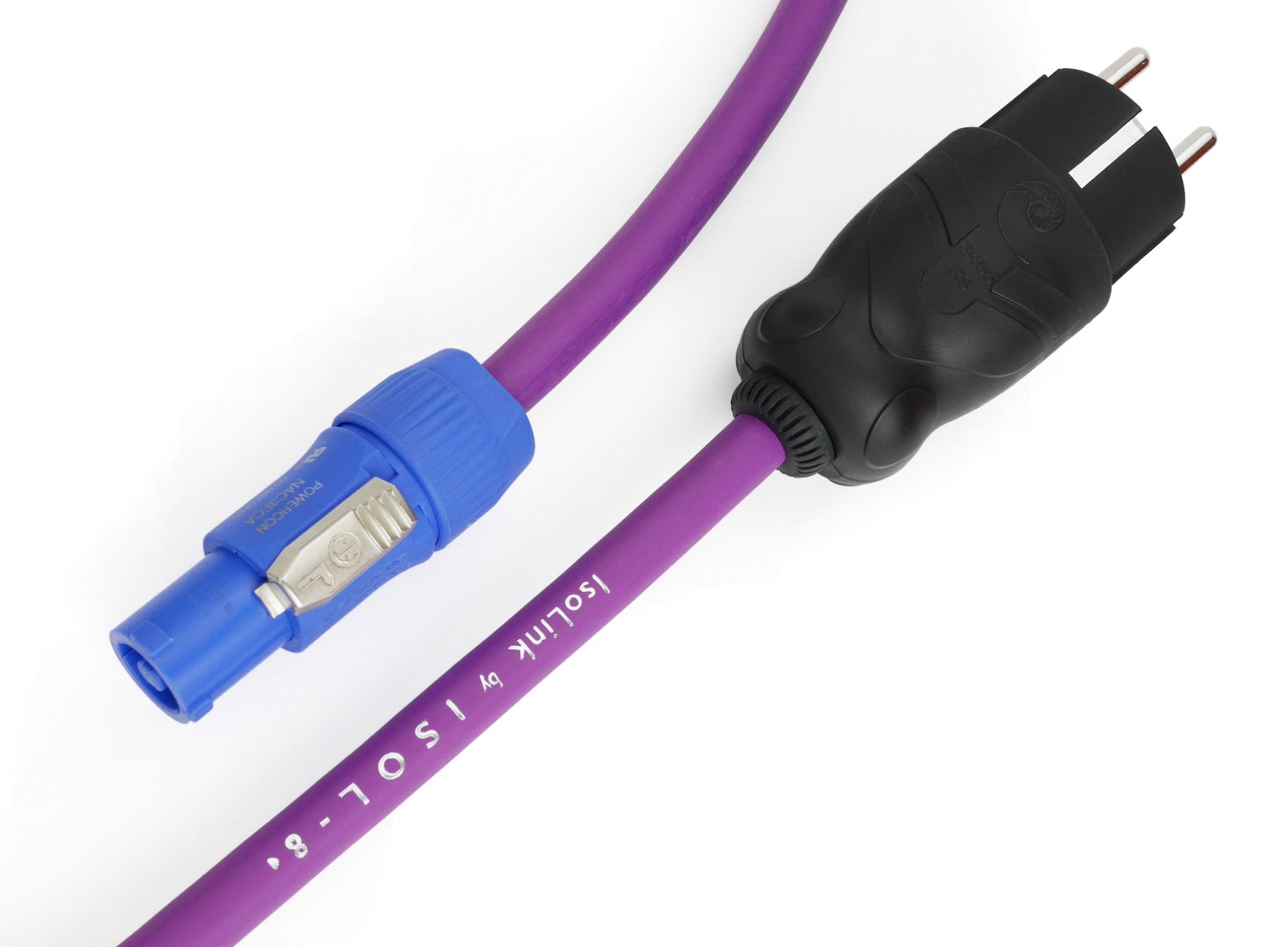



Hello Paul,
I know this is a personal question but you bought one right? I mean if it improves your listening experience that much. If it’s too personal then i apologize.
Best regards
Geoff
Hi Geoffrey – I used a total of four active mains conditioners (one after another) for many years when I lived in the city. After a while, I found that they all imposed a sound signature on my hi-fi so I dropped them. It was subtle – which is why it took a while for each one to ‘reveal’ itself. But it was there. After that, I used a passive system. I use that right now. Even though I live in more countrified surroundings now. Since then, later, I’ve found two systems that have offered an active system but have not followed that up with any sort of imposition (I’d be using those now if I wasn’t bedded in with my passive system). ISOL-8’s gear is one of those new actives. That is, it does the job, without getting in the way or adding colour of its own to the sound.
Hi Paul so what is the other gear? Is it Puritan Audio? Cheers!
You’ve lost me, James. Are you asking for alternatives to ISOL-8? Yes Puritan is one option. Isotek is another.
Hi Paul: I note you touched upon the Isol-8’s technology type; passive/active (here, in replies) as opposed to in the review ?
Is it a “Balanced/Symmetrical” (transformer-based) device, or a simple non-balanced/symmetrical isolation transformer ? Does it have any “active” circuits (or transformer) within ?
You quoted someone telling us “differential noise is addressed” -but fail to explain how (actively, passively) ? Of interest to me is how the ‘cross-contamination’ element is minimized/reduced and/or eliminated ?
A L$2,200. (BPD, Euro?) device and not a word on its operating principles ? And we wonder why so many folk consider audiophiles a bit strange.
How about a clear, concise explanation on how the various noise-producing AC-line (and inter-component crosstalk) noise is combatted with this device.
I’d think someone willing to fork over nearly $3K (US/CA$) should have a right to know. They should also expect a reviewer to take the initiative and interest to answer these basic questions essential for an informed purchasing decision -and/or to facilitate a comparative analysis (against competitors).
In fact, your reply to Geoffry (above) would have served readers better, but then of course you’d have to do some work (albeit briefly) to disclose some of the distinctions between active & passive devices.
peter jasz
Hi Peter
Yes, you’ve talked about this sort of thing before. I think I need to clarify the nature of this site, therefore.
As this is an internet site that is digested in various ways, I have to be aware of my readers, who they are and how they are reading my words.
Firstly, there is absolutely no point in repeating anything. Why waste your time and my space? This is why I supply a company link at the end of reviews/news/etc for further reading. That’s why these pages exist. Why not use them, therefore? Often, the companies will go into great technical depth.
Secondly, not everyone has the time or patience to read large, expansive tracts of detail. In fact, not everyone even wants to go into that much detail in a review (again, see above on that one). I try to supply an overview but have no wish to go any further.
Thirdly, I babble on more than enough on most reviews. Offering in excess of 1,500 words on many occasions. If I waffled on about techie detail then that could easily hit 3,000 words. Possibly much more. At least half of my readers access this site via a mobile device. If you are reading on such a device with a smaller screen and often in less than comfortable circumstances (i.e. standing up on a train on the way home from work, in a busy coffee shop, walking down a High St, etc) then thousands of words per review can be, quite frankly, boring to many readers. It’s not what they signed up for.
Fourthly, it’s impossible to please everyone all of the time (as Abe Lincoln once noted) hence why my site is designed thus: if you want a general review and for me to get to the point, read the review. If you want further detail, click the company link, if the company doesn’t supply enough of that detail or you don’t understand that detail then that’s what the Comments section is all about.
The Comments section is not here by accident and is not here to prettify the site – it has a practical use. Whenever I review any product, I never see that as the end. I don’t think the review is ‘it’. I am always ready to talk further and explain more if any reader needs it.
Hope that explains your ‘I would have expected more considering the price of X.’-type comments.
As for the ISOL-8, here is the company notes on noise: http://www.isol-8.co.uk/types_of_noise.html
The core of the ISOL-8 technology: http://www.isol-8.co.uk/transmodal_technology_explained.html
And more direct information on the box itself: http://www.isol-8.co.uk/hres/substation _integra_e_brochure.pdf
If you need any more information, I’ll only be too happy to help. If I can’t – and I’ve also done this before, most recently with Yamaha and Rega – then I will gladly contact ISOL-8 itself to provide you with direct answers to your specific questions.
Thanks for your comments, they are always welcome and it’s very kind of you to spend your time, well, ‘caring’ I suppose. I hope the above goes some way to explaining what I do and why I do it. As I say though, the Comments area is critical to the site. I suppose this brief exchange proves the fact.
Hi Paul: Thank you for your considerate reply.
I just have one thing to add when you say:
“This is why I supply a company link at the end of reviews/news/etc for further reading. That‚Äôs why these pages exist. Why not use them, therefore? Often, the companies will go into great technical depth.”
This is WHY we need ‘reviewer’s; to confirm (or refute, or add insight to ) a manufacturer’s obviously biased, self-serving interests.
Will a manufacturer gloss over critical aspects of its products not offered to users, or reference the competition ? Who is there to “challenge” their self-serving interests -if not for publications that do take the time and interest to further investigate.
I’m a ‘writer’ myself, and can tell you you can inform readers of insightful information concisely and succinctly. If not, look for a talented editor -by the way, things are kind of slow for me these days -lol)
The success of any business hinges, partly, on what it offers customers that others cannot.
As far as I can see, your product introduction session (review?) adds nothing that a general Google search can. In which case … you get the point.
peter jasz
Hi Peter – thanks again for your thoughts…
And I would say that I do challenge. I already perform your ideal actions. Look at poor old McIntosh, for example. Here’s a respected company who not only kindly sent me a high end turntable to review but also an expensive phono amplifier.
They had to fend off a host of secondary questions from myself asking why this and why that re their hardware (the answers to which were printed in the review).
I then fired structured, justified and logical criticism at the company for including a less than ideal, relatively low quality ADC in their phono amp and, later, for featuring and supporting a relatively low cost cartridge in a high end turntable.
As far as I am aware, correct me if I’m wrong, I am the only journalist who has taken such strong stands (as opposed to a back handed mention) on both of these products in terms of published reviews.
You need more? Look at the Chord Hugo review (again, no other journalist was as robust in their criticisms of the latter DAC). I could go on.
So, yes, I would say that I do challenge. Other writers might benefit from your observations, therefore.
Hi Paul,
Great article. I was in ‘mains issues denial’ too, but on the advice of a very respected amplifier designer, I purchased an isol-8. Everything you write here I can personally verify as not exaggerated. I wish I had done it earlier.
Thank you for your kind words Harley and I’m glad its working for you.
any thoughts about this vs the Puritan 156 Paul?
sale on one of these integras at the moment at a certain store, but the price of things I’m looking at keeps creeping up and up…
they both seem to be similar tech maybe, just slightly different price points
Top quality and, as you say, moving in the same direction tech-wise. If there’s a sale grab it 🙂
Grand. Can I borrow your wallet Paul? üòÄ
Of course Will – although there’s enough space in there to house a family of three 🙂
I couldn’t agree more with your review. I have this unit and a very happy customer. One question though…
As the unit does the job superbly, I am wondering if you ever need a high end or high performance mains cables from the wall and from the unit.
Hi Bimbo – in short? Yes you do. And you need to take notice of component isolation, and quality shelving, grounding solutions and 57,000 other points relating to removing noise 🙂 The ISOL-8 is excellent but this and all such devices can only ever be seen as one element in a basket of necessary tools that is required to address other areas in and around your hi-fi.
Many thanks for your advise. Yes in short!
One of experts told me sometime it is better to plug power cable, expensive ones though, straight into wall socket, instead of via conditioner.
I did a little experiment and isol-8 delivered much better picture.
I do not wish to go mad with expensive cables but it seems better having decent ones. Maybe isol-8 own ultra cable. Have you tried? If not, would you recommend some under 400-500 quids?
And yes I have Entreq grounding in place, quadraspire shelf and am thinking about stillpoints down the line.
Hi Bimbo – glad to hear that you’re addressing the rest of your system. I would take a casual saunter down my accessories section too. There may be other items in there that might appeal or plug a gap.
A cable connection to a wall socket is a purer, more direct, connection, yes. That said, the wall socket is where the noise is coming in and that’s what the conditioner is tackling. Hence, in your case, if the sound improves when the the conditioner is present then that needs to be in the chain.
Better cables are part of that basket of tools I mentioned earlier. Improved cables enhance the signal transfer but they also help to reduce noise. Hence, I would recommend those too if the budget can stand it. Ultras are good quality, yes. Another option is Black Rhodium’s Stream at around ¬£500: https://theaudiophileman.com/stream/
Many thanks for your advise.
Would be interesting to read your a/b comparisons between Black Rhodium Stream and Tellelium ultra black etc!
I‚Äôll do my best to make it happen, Bimbo. That said, I do have a whopping great review queue, so it might be some time 🙂
Could be a Christmas present or NewYear celebration then!
Hi Paul, I managed to acquire one of these at a knock-down price. It is proving an excellent purchase. Could you advise whether I should also purchase Isol-8’s mains cables, and if so, which versions? My stem is Icon Audio PS3 SE, MB90MKII SE, SME 20/3, SME V, Ortofon Cadenza Black and Klipsch LaScala IIs.
Glad to hear that it’s working for you, Mark. Re. the mains cables? Not necessarily – what’s your budget? How many do you need?